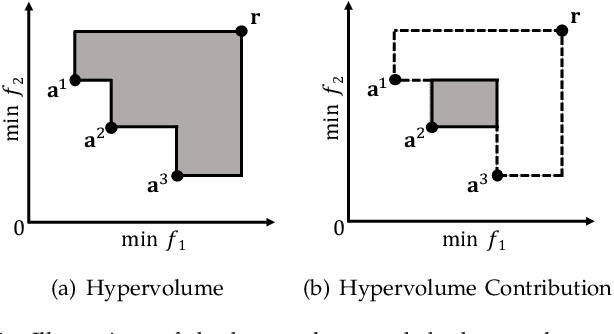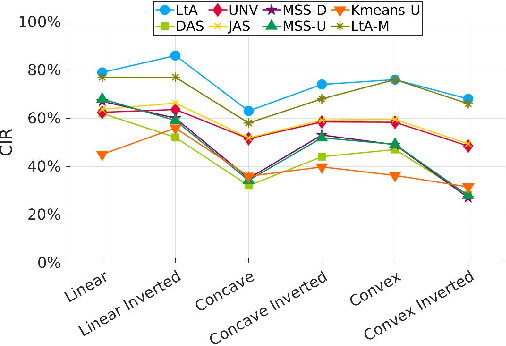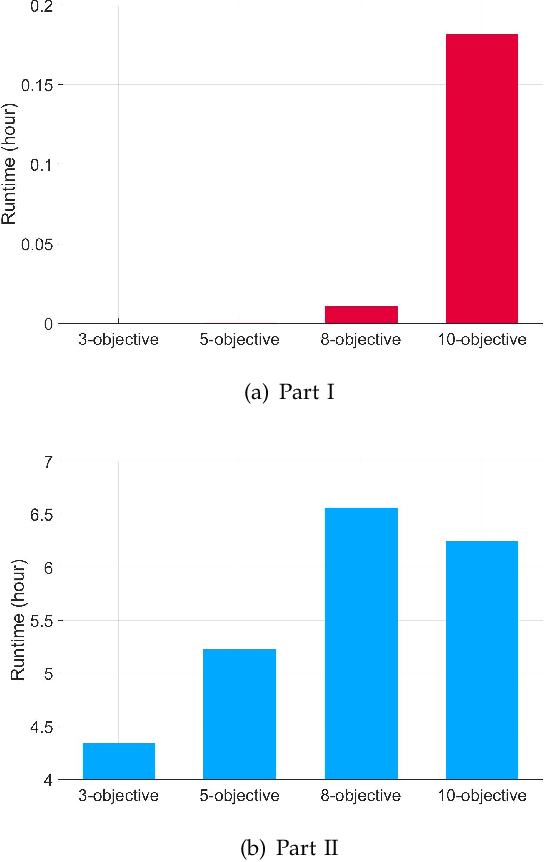Learning to Approximate: Auto Direction Vector Set Generation for Hypervolume Contribution Approximation
Paper and Code
Jan 18, 2022



Hypervolume contribution is an important concept in evolutionary multi-objective optimization (EMO). It involves in hypervolume-based EMO algorithms and hypervolume subset selection algorithms. Its main drawback is that it is computationally expensive in high-dimensional spaces, which limits its applicability to many-objective optimization. Recently, an R2 indicator variant (i.e., $R_2^{\text{HVC}}$ indicator) is proposed to approximate the hypervolume contribution. The $R_2^{\text{HVC}}$ indicator uses line segments along a number of direction vectors for hypervolume contribution approximation. It has been shown that different direction vector sets lead to different approximation quality. In this paper, we propose \textit{Learning to Approximate (LtA)}, a direction vector set generation method for the $R_2^{\text{HVC}}$ indicator. The direction vector set is automatically learned from training data. The learned direction vector set can then be used in the $R_2^{\text{HVC}}$ indicator to improve its approximation quality. The usefulness of the proposed LtA method is examined by comparing it with other commonly-used direction vector set generation methods for the $R_2^{\text{HVC}}$ indicator. Experimental results suggest the superiority of LtA over the other methods for generating high quality direction vector sets.
 Add to Chrome
Add to Chrome Add to Firefox
Add to Firefox Add to Edge
Add to Edge